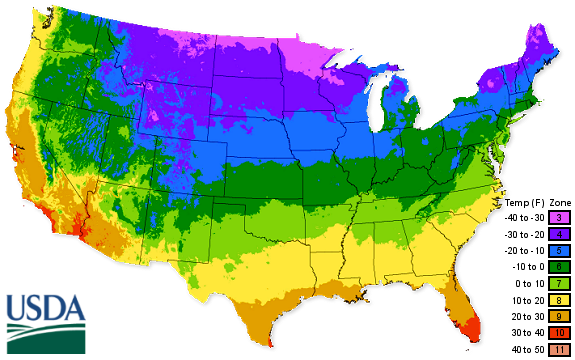How Important is Water for Your Trees?


I suspect most of you already know the answer to the above question, but it’s worth re-stating, then explaining why, and offering some suggestions on how and when to provide water. As the saying goes: Water is the essence of all life. It’s also one of the three basic elements of wildlife habitat: water, food, and cover, and without the former, you can’t have either of the latter.
Photosynthesis is the process by which plants use sunlight, carbon dioxide, and water to fuel growth. In simplified terms, water provides oxygen and electrons to the process, converting solar energy to chemical energy, which is stored in glucose. With the right combination of air, water, sunlight, and soil nutrients, plants grow. Not enough or too much of any component can retard or even stop your mast orchard trees’ growth.

Climate is an important consideration in deciding what you can plant, and the USDA’s Hardiness Zone Map provides guidance in choosing tree and shrub species best suited to your climate. You then need to know the soil moisture requirements for those species and which specific locations meet those requirements to maximize growth and productivity. Or provide water if they don’t.
Just as with planting food plots and mast orchards, it all begins with the soil. As their name implies, well-drained soils hold less moisture, often but not always occurring at a higher elevation or on slopes. Like those with high clay or organic matter content, tight soils hold more water and more often occur in lowlands. Too much water can be as much of a problem as not enough. You can find Soil Survey maps for your county online at the Natural Resources Conservation Service.
Now you’ve selected a variety of trees and shrubs best suited to your region, based on Zone maps and perhaps some consultation with the experts at Chestnut Hill Outdoors. You’ve consulted the Soil Survey maps and even taken some soil samples from various locations to determine which areas offer optimum soil moisture conditions. It’s time to start planting and watering.
This is the most important step in the establishment of your new trees. They must get sufficient but not too much water, especially for spring plantings. Depending on local climate and soil conditions and how much rainfall you get, you may need to water newly planted trees as often as 2-4 times per week for the first year. Water thoroughly, but do not over-water; the soil should dry down slightly between watering. If you plant in the fall, water at planting, and then once per week until the trees lose their leaves and go dormant with the onset of winter. Then resume watering after leaf-out in the spring.
Most of the eastern U.S. receives sufficient rainfall from frontal rains during the spring and fall and storms in the summer to support the average growth of native plants. If it didn’t, the plants wouldn’t be there. But it may not be enough for your plantings, especially if you want to maximize mast production. Furthermore, moisture leaches more quickly through sandy soils, and there are often dry periods during the fall when it may not rain for weeks, which can hurt tree growth, flowering, and fruit production.

Irrigation is one way to get more water to your trees, but it can be costly, labor-intensive and may not be practical in many wildlife food plots and mast orchard situations. In that case, you can haul water with a tank mounted on your ATV or truck. Tanks are inexpensive and available at most farm supply stores in varying sizes.
If you want to save time, a 5-gallon bucket with a 1/16” hole drilled just above the bottom can be filled from the tank. Leave it next to the tree where it will drain slowly, reducing over-watering, and will catch and slowly release rainwater. Grow Tubes can also be beneficial as they will recycle the leaves’ transpiration moisture at night.
The importance of water for plant growth and productivity cannot be overstated. It’s an essential component for photosynthesis and plant growth. Therefore you must provide enough, but not too much. It may seem a tedious task at first, but once your trees have put down roots, you and your family can sit back and enjoy the benefits of your investment for generations to come.
For more information on watering, visit our Learning Center.


